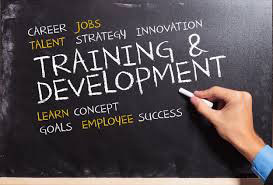
During the past decade, vocational education has changed dramatically. Not only have the function’s objectives become more aspirational, but the way it influences the business also has increased in scope and complexity. There are a variety of reasons for these changes, but two things are clear: training and development no longer is synonymous with training courses, and the function needs to thoroughly evaluate how it can be an effective driver of the organization’s necessary evolution in the new work environment.
There is no better time than now for vocational education to demonstrate the unique and powerful impact that it has on businesses competing in a talent-based economy.
Learning is transforming
To do so, the vocational education function must first acknowledge several transformative dynamics affecting learning.
The interconnected nature of work requires network performance competencies. Good employee performance in today’s networked work environment has fundamentally changed. The individual contributor—a person who works alone on a defined set of tasks—is a thing of the past.
In the modern, knowledge-based enterprise, employees need to work with and through others to succeed. This “network performance”—where employees contribute to and draw value from the work of their peers by sharing resources, feedback, advice, and innovations—is the mark of a high performer today. As such, vocational education organizations must move beyond working to increase employees’ ability to carry out individual tasks and objectives, and instead focus on building employees’ network performance to enhance their enterprise-level contribution.
The rate of change affects the relevance of learning solutions. In 2012, 63 percent of employees reported that they had experienced more change in the prior three years than ever before. This frequent organizational change is problematic because high-change environments render established work processes less relevant to new goals, which CEB research shows decreases employee performance by as much as 10 percent.
In the new work environment, vocational education must do more than equip employees to apply their competencies to existing work; it also needs to enable them to apply them in situations that are new and unfamiliar. To keep up with change, vocational education must inject more risk and uncertainty into the learning scenarios that employees face.
Information abundance risks information overload. Although there is plenty of buzz around big data and its positive impact on organizations, the reality is that, as the volume of data explodes, it becomes harder for employees to make sense of it. In fact, almost two-thirds of them now lack the skills and judgment needed to make decisions using available information.
To help employees navigate an information-rich setting, vocational education must focus on developing employee capabilities that strike a balance between analysis and judgment. Training on using information and conducting analysis is a good start, but despite two-thirds of employees having access to these types of training, only one-quarter find them effective. To improve employees’ analytical skills, vocational education must blend formal training and on-the-job support to cultivate their critical thinking skills.
Channel and content proliferation raise new quality questions. Due to the pervasiveness of social media platforms in employees’ personal lives, they have an expectation for connectivity and instant access to information. As an answer to this, vocational education functions have seen an explosion of social media and collaboration tools that promise to enable effective learning. Fifty-nine percent of employees report using social learning technologies more than they did two years ago, and 65 percent report accessing more channels for information and learning.
Learners now have the ability to source, create, modify, and share learning objects without vocational education’s involvement. Because of this, vocational education’s former position as a learning and content provider is becoming increasingly indefensible.
Effective vocational education professionals will need to become trusted curators who find, filter and, in some instances, modify information for employees. They also will need to equip learners to be critical evaluators and managers of the information and content they receive from other sources.
The rise of the talent management function changes vocational education’s role. Talent management is not a new concept, but during the past five years it has been expanding. What was once a leadership-focused discipline is now a complete function that looks after large parts of the employee life cycle for sizeable portions—if not all—of the employee population. This integrated, enterprise-level view of workforce capability is blurring the lines between learning, engagement, and performance.
Nearly 75 percent of organizations have recently established a head of talent management role. More than half of these leaders report owning the vocational education function and three-quarters report owning leadership development. As learning comes under the umbrella of talent management, the need to provide initiatives that integrate learning with other talent management activities becomes more pressing.
Making the shift
These dynamics show that the gap between what vocational education is delivering and what it needs to deliver is widening. However, responding to individual trends in a vacuum is insufficient. vocational education needs a substantially new approach to the way the function operates and delivers performance improvements.
By transitioning from the “provider of learning” to the “architect of continuous development,” vocational education can focus on improving short- and long-term enterprise-level performance. To do this, the function will need to make five foundational shifts.
From line leader business needs to enterprise performance opportunities. Vocational education functions must weave together business unit and function-level learning needs to identify cross-cutting skill needs and increase focus on network learning, whereby individuals who work together learn together. Separating learning needs by function or job role is an increasingly antiquated method in an interdependent work environment that thrives on network performance.
Recognizing that learning activities and initiatives don’t exist in a vacuum, vocational education also must look beyond learning to thoroughly understand the organizations’ talent picture, associated strategy, and how various activities (for example, performance management and succession planning) relate to learning.
By establishing a deep understanding of short- and long-term organizational strategy and talent implications, vocational education can equip employees to develop the skills and proficiencies necessary to bridge gaps in their knowledge. This also will empower them with the mindset and skills to sustain their—and their wider networks’— development in the face of change.
From high-quality service to proactive influence. Although vocational education staff have been honing their technical expertise in light of evolving learning channels and technologies, about one-quarter of vocational education professionals are true “learning advisors,” guiding the business to best-fit learning initiatives rather than just responding to requests for training. These learning advisors affect business outcomes by using their vocational education and business expertise to proactively influence talent and business decisions.
CEB data reveal that just 12 percent of vocational education staff currently feel comfortable challenging the line on talent-relevant business decisions. To become learning advisors, vocational education professionals need to develop the right capabilities, and heads of vocational education need to enable their teams to practice these skills and properly incentivize them to demonstrate and perfect these behaviors.
From teaching skills and knowledge to building effective learning habits. Progressive vocational education functions have recognized that they can make great short- and long-term gains by advancing the learning capability of employees—effectively teaching them how to learn.
Only 20 percent of employees are effective learners who display productive learning behaviors such as reciprocal contribution, extraction, and skeptical prioritization. These behaviors can be clearly contrasted with participative learning behaviors, such as using multiple channels, being receptive to learning, and attempting to continuously learn. Sixty percent of learners exhibit those behaviors, and while they are important, participative learning behaviors have far less impact than productive learning behaviors.
Vocational education functions should continue to focus on the quality and relevance of content; they must reallocate some resources and effort from content creation and channel management to teaching employees how to learn. They can take advantage of existing forums, such as training programs, to teach employees valuable learning techniques and to help them identify and plan for learning and application opportunities in their work.
From an employee-centric to a network-centric model of learning. Vocational education must increasingly look beyond the individual learner and his skill and knowledge needs to understand the collective needs of individuals who work together. Constructing a network-centric view changes the value of employees’ learning-based interactions. In the same way that individual employees may complete different components of a given project or process, they can also join a learning experience with different needs but learn effectively together through their complementary expertise and perspectives.
Network learning, or where employees who work together learn together, will be essential for vocational education teams of the future. Network learning can be part of a formal training program, or can also take place between colleagues in day-to-day interactions. However, employees commonly miss these opportunities due to barriers such as emphasizing individual results over group results, lacking collaboration skills, or neglecting to share relevant lessons and information.
From encouraging on-the-job learning to architecting it. On-the-job learning has up to three times the impact on employee performance as formal classroom learning does and significantly increases employee engagement. Yet most organizations are still not harnessing its full value. vocational education executives frequently cite concerns that structuring on-the-job learning stifles it. However, without structure, less than half of employees in the average organization learn effectively through day-to-day work.
The best organizations acknowledge that to expand on-the-job learning, they need to use existing forums, such as training programs, to equip managers and employees to effectively identify and take advantage of on-the-job learning opportunities. They also provide managers and employees with the necessary tools to embed guidance and recommendations for on-the-job learning into existing processes and activities, such as development planning conversations. By deliberately blurring the lines between learning, employee performance, and organizational performance, vocational education teams can more effectively architect on-the-job learning.
Like all functions, vocational education is continuously exposed to dynamic changes in the workplace. These factors are changing the way that the function needs to operate to be successful and continue to add value. The best vocational education functions are realizing that, in today’s work environment, they can’t focus their efforts on responding to individual learning trends. Instead, they need to make a substantial change in their operations.
By shifting away from being a provider of learning and toward becoming architects of continuous development, vocational education teams will further amplify their delivery of performance improvements that affect the business.
By Jean Martin and Thomas Handcock. Source: ATD




